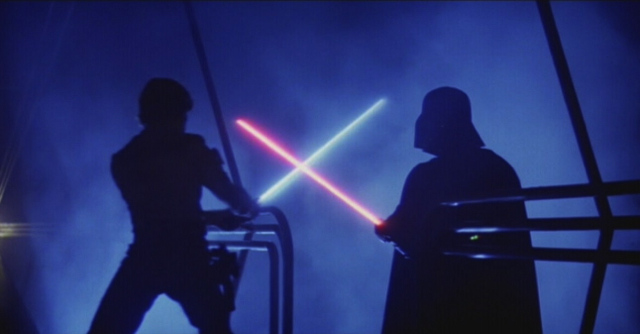Hot Air:
It’s here: MIT and Harvard build a real lightsaber
posted at 3:06 pm on September 26, 2013 by Katie Pavlich
Get ready Star Wars fans, your biggest dream may have just come true. Scientists at MIT say they’ve created a real lightsaber. Rejoice!
That’s right, researchers at Harvard and Massachusetts Institute of Technology say they have built an actual lightsaber, like the ones used in the Star Wars saga.
Harvard Professor of Physics Mikhail Lukin and MIT Professor of Physics Vladan Vuleti led the study.
The team of physicists say they have discovered a new kind of matter, using things called “Photonic Molecules.”
They say unlike typical lasers which pass right through each other, these bind together so you can whack them against each other.
They say it all ends up looking like the iconic Jedi weapon.
Throwing this into the political arena, the lightsaber development comes just two days after Republican Senator Ted Cruz quoted Darth Vader from the Senate floor during his 21-hour stand against Obamacare.




 Reply With Quote
Reply With Quote


Bookmarks